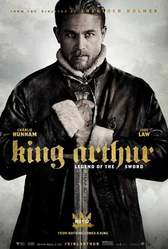|
Hollywood never seems to tire of making movies about men hunting women, and this year was no different. The latest in the genre is Halloween (2018) starring Jamie Lee Curtis as the prey and James Jude Courtney and Nick Castle as the man trying to kill her (they share the role of serial killer Michael Myers). This is not even the first time this man, Myers, has hunted Jamie Lee Curtis. Halloween is a franchise that includes 11 movies, and she has been hunted by him in five of them. The stories revolve around a man who, as a boy, stabbed his sister to death before going on to become a serial killer. The first movie of the franchise, Halloween (1978), made US$70 million at the worldwide box office (unadjusted dollars). The subsequent films did not fare as well. So far, Halloween (2018) has made over US$142 million at the worldwide box office. That US$70 million in 1978 dollars for the first movie translates to quite a respectable sum in 2018 dollars. No wonder filmmakers were avid to make sequels. In the three years I have been researching the sexualization of women in media and violence against women—for which I have analysed hundreds of feature films—one of the dozens of things I have kept track of is occurrences of men hunting women in film. It is a common occurrence and does not only happen in movies about serial killers—far from it (see my post from June 5, 2018). Filmmakers and audiences appear to relish women being hunted. The opening scene of the first movie from the franchise even includes a point of view shot, so we are shown the first girl's murder through the killer’s eyes (first-person perspective), which is especially disturbing. This film technique can give the viewer the impression that he is the one responsible for the action, in this case killing the girl. In the “real” world there is a pandemic of violence against women, according to the United Nations. Gynocide is a global problem, and the overwhelming majority of women’s killers are men. As just one example from just one country: In 2012 UN Deputy High Commissioner for Human Rights Kyung-wha Kang noted that 647 women were killed in El Salvador in 2011. That is just one year in one little country. It is high time filmmakers stopped normalizing men hunting women on the big screen. It doesn't matter how many times Jamie Lee Curtis kills her pursuer at the end of the movie. It doesn't change the fact that for most of the movie she and many other girls and women are a man's prey. © 2018 Alline Cormier
0 Comments
It is strange but not uncommon for movie scenes to be repeated. For instance, in both Young Frankenstein (1974) and Animal House (1978) a female is launched through the air and an open window before she lands on a bed. Young Frankenstein is a PG-rated comedy, and it is a little girl who is launched from a teeter-totter before landing safely in her bed. Then the covers are brought up over her. Animal House is an R-rated comedy and it is a woman dressed like a Playboy bunny who is launched off a parade float and through a boy’s bedroom window. When she lands on his bed in heels, rabbit ears, a cotton tail and little else the boy is looking at a Playboy magazine and he exclaims, “Thank you, God!” Having analysed 445 movies thus far I have noticed a lot of these repeated scenes. I happened to analyse both Young Frankenstein and Animal House last week and it struck me as an odd coincidence that they both contain such a scene. I’ve seen other women go flying through the air in movies, but they don’t usually land safely on a bed. This isn’t one of the dozens of things I’ve tracked in mainstream movies for my upcoming book on the sexualization of women in media, but I thought it was interesting enough to warrant a moment’s reflection on a Sunday.
© 2018 Alline Cormier The other day I revisited The Godfather (1972, US$268 million at the worldwide box office) and Animal House (1978, US$141 million at the U.S. box office), two movies that include a dead horse in an urban setting. What are the odds? Both score poorly in terms of women's presence and voice. Both sexualize women. Then I analysed Miss Sloane (2016, US$7 million at the worldwide box office)—thankfully, no dead horses. What a breath of fresh air. Instead of seeing women who had nothing to say I was treated to a woman with more lines than I think I have ever seen in a Hollywood movie, and I've analysed 440 mainstream movies so far. The lead female character in Miss Sloane is sexualized—that is practically a given nowadays—but she is also shown working with other women to reach a common goal, something rare in cinematic history. She is also shown eating—women practically never are—being praised and getting the last word. I might treat myself to another viewing.
© 2018 Alline Cormier Last night I analysed King Arthur: Legend of the Sword (2017, US$139 million at the worldwide box office) for my upcoming book on the sexualization of women in media. This is a Guy Ritchie directed PG-13 movie. Two women are murdered within the first 15 minutes (one is killed by her husband), and two more women are murdered before the end, including one killed by her father. Sexualization is not an issue here. However, my book covers much more than the sexualization of women in media. There is also a significant focus on violence against women and portrayals of women (voice and presence).
In King Arthur: Legend of the Sword women's voice and presence and violence against women are the real problems. It fails the Bechdel test (a test that serves as an indicator of the active presence of women in movies) because no two named female characters ever speak. Even though the movie runs two hours the filmmakers only found time to have women speak to men. If this does not strike you as odd ask yourself how many movies you can name in which men never speak audibly to other men. Moreover, women only play supportive roles here--overwhelmingly wives, mothers, daughters and prostitutes. So as far as voice and presence go it scores poorly. Then there is the violence: a man stabs his wife, his daughter and his sister-in-law and another woman has her throat slit by a man. Also, another woman finds herself in fear of death (a man holds a dagger to her throat) and women are beaten by men. As if all this were not enough women are ordered about, for instance when Jude Law says to Annabelle Wallis,“Bring us something to eat” and “Sit down.” #GuyRitchie's #KingArthur movie has little to offer a female audience. © 2018 Alline Cormier |
Categories |









 RSS Feed
RSS Feed